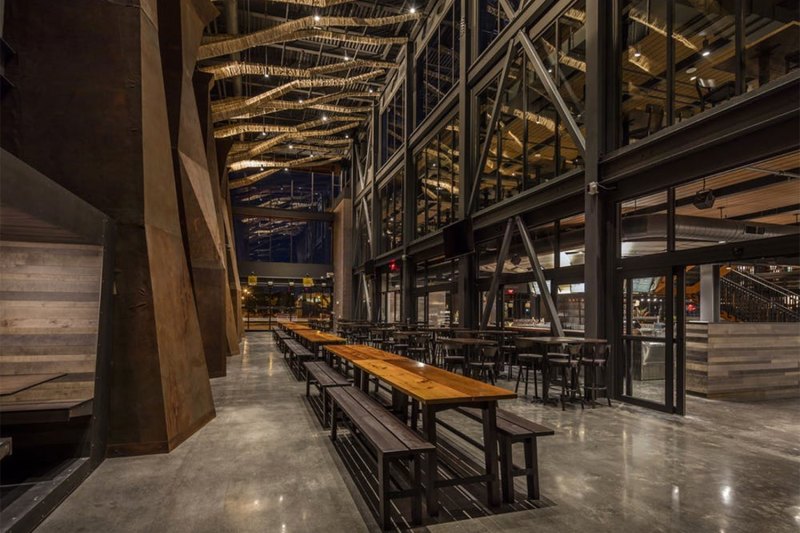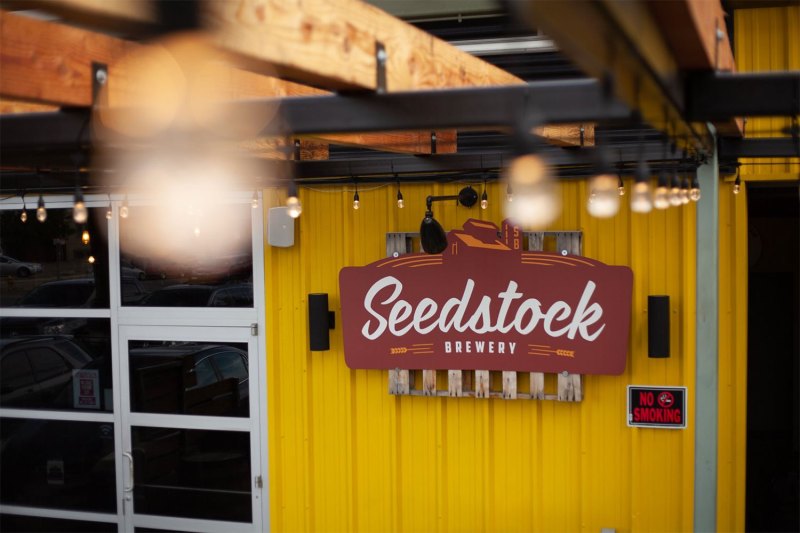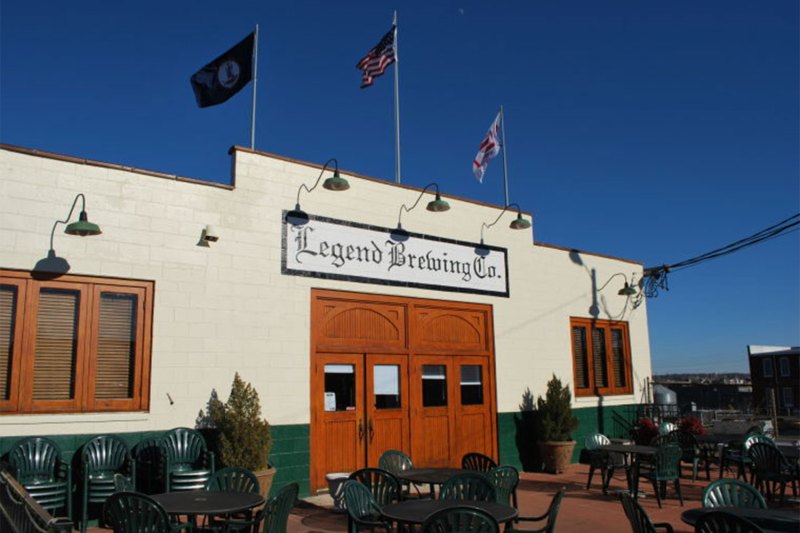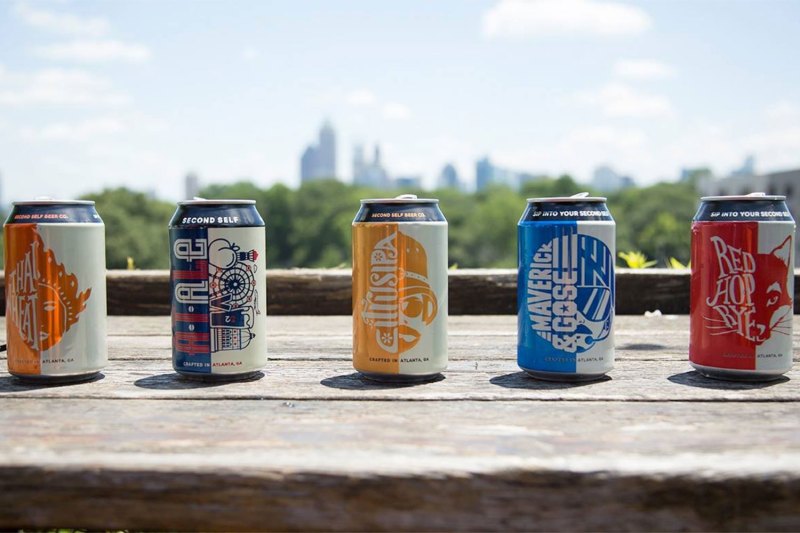Ardent fans of mass-market beers, artisanal microbrews, and everything in between largely agree that we’re currently in the midst of a golden age for the beer industry. Nowadays, it’s difficult to think of a single metropolitan area in the U.S. that isn’t home to numerous breweries and well-curated beer pubs. However, certain cities take their appreciation for beer to another level, and their high volume of beer-centric establishments and the importance of beer culture to their overall identities gives these towns the right to call themselves “Beer Cities.”
But what really defines a “beer city”? What separates a “beer city” from “a city that happens to drink a lot of beer”? Which “beer cities” currently prove most significant in the American drinking landscape, and which cities count as emerging “beer cities to watch”? We consulted expert sources (i.e. brewers and beer bartenders) and collected a list of 10 established beer cities, 4 promising up-and-comers, and the characteristics that give these urban areas plenty of beer cred.
The Established
“People in Grand Rapids feel an almost familial connection to their local breweries.”
We’ll start with a city located in the region of the country that’s arguably most associated with beer in the popular imagination: The Midwest. Grand Rapids, Michigan isn’t considered a “big” city; with a population of just over 200,000, it’s about a third of the size of nearby Detroit. But Grand Rapids holds a nickname that fully represents its standing in the beer world: Beer City USA.

“We have over 80 breweries in [the Grand Rapids] area, which is amazing. We were voted Beer City USA for a reason, but it’s not just based on sheer quantity of breweries. Our community is very supportive of our local brewery scene. We have such a wide range of breweries that really offer something for everyone; from small self-distributing guys to breweries that have beer found across the globe; it’s pretty awesome that they all come from our area. From a brewery side of things, it pushes everyone to produce the absolute best beer possible; you can’t just survive by opening up your doors anymore. The drinkers in Grand Rapids spend their dollars with breweries that deliver best-in-class experiences, and we continue to strive to exceed those expectations,” explains Grand Rapids brewer Jason Salas of New Holland Brewing Co.
“Chicago is a proud city and we always have each other’s backs. That’s why you’ll always see Chicago breweries donating their time and extra resources to local charities and neighbors.”
The Windy City takes enormous pride in its local breweries, as evidenced by the impressive quality of Chicago beers and the city’s powerful and mutual support between beermakers and community residents.
“When I think about Chicago’s craft beer culture, I see it rooted deeply in the communities and diverse neighborhoods that make up our great beer city. Chicago is a proud city and we always have each other’s backs. That’s why you’ll always see Chicago breweries donating their time and extra resources to local charities and neighbors.
At Goose Island, I’m proud that we’ve stayed true to supporting local communities since 1988, from donating proceeds from beer releases, to events and festivals outside our brewery, to local artists and more. Most recently, we donated proceeds from Women of the House, a special guava wheat pale ale brewed to commemorate the 100th anniversary of women’s suffrage, to Women Unite of Chicago, a women-operated nonprofit in Chicago providing high-quality consulting services,” brewer Alison Christen of Chicago’s Goose Island Beer Co. tells us of the spirit surrounding the Chicago beer scene.
“As a beer city, Denver is not just about breweries – it’s the whole ecosystem.”
The Mile High city of Denver, Colorado has served as a cult destination for beer enthusiasts for many years now, and the excellence of Denver’s beers and the painstaking nature of its brewery operations is rapidly becoming common knowledge.
“A beer city is not just about breweries – it’s the whole ecosystem. In addition to the breweries, it’s the home brew shops, home brew clubs, beer writers, taproom selection, and diversity in the types of beer. A real beer city has a real diverse taste in the type of craft beer they drink. [In Denver,] you have breweries with strict focuses on IPA, sours, English beers, Belgians, lagers,” co-owner Ron Abbott of Seedstock Brewery in Denver says of the attention to detail provided by his city’s brewing (and drinking) community.

Co-owner Leah Watson of Hops & Pie pizzeria and taproom in Denver insists that Denver’s strength as a beer city comes from its commitment to local brews and the prevalence of these small-batch craft beers: “A beer city is a city where you can get a selection of craft beer at every restaurant. Every neighborhood has at least one to two neighborhood breweries. In more second-tier beer cities, there are still beer fans, but many people stick to their Bud Lights. Here, you go to a barbecue and people will have craft beer in the fridge. You can talk about craft beer to just about anyone.”
“San Diego defines itself by demanding high-quality beer.”
The relaxed beachfront city of San Diego, California is famous for its laid-back vibes, but the beer fans of this West Coast brew haven take the quality of their suds very seriously. “San Diego has defined itself by demanding high-quality beer. The brewers demand it, the publicans demand it, and the consumers demand it. Because of this, [now is] a great time to be a beer drinker here. It’s a pretty safe bet that you can walk into any establishment and find a great lineup of super high-quality beers. This can make your ordering decision a little difficult, but so much more fun,’ senior director of brewery operations Yiga Miyashiro of Saint Archer Brewing Company tells The Manual.
In terms of specifics, Miyashiro points out one style of beer that San Diego has truly mastered: “San Diego is known for our IPAs. We make a lot of them and, in my opinion, we make damn good ones to boot.”
“Austin has decades of history of craft breweries making great beer”
The capital of the Lone Star State rightfully earns plenty of credit as a prime locale for barbecue, breakfast tacos, and spirits. It’s also home to a large number of breweries, and according to head brew master Scott Rynbrandt of Central Machine Works in ATX, “a beer city has a story. Austin [has a] younger demographic, but we also have decades of history of craft breweries making great beer such as Celis, Live Oak and Real Ale. The other important aspect is that the history gets passed down to the next generation. I was trained by an older generation of brewers and use that historical knowledge to inform the beer I brew today.”
Rynbrandt tells us that “there’s a strong German heritage in the brewing culture [in Austin]. Live Oak Hefeweizen and ABGB Rocket 100 Pilsner are a few popular examples. German beer pairs perfectly with the hot summers and the outdoor mindset. At Central Machine Works, our Pilsner, Kolsch and New Seasonal Vienna Lager are all German-style beers.”
“Brand identity, brand loyalty and pride are paramount in establishing a beer city like Asheville.”
The artistic, innovative energy of Asheville, North Carolina contributes to its recent mega-popularity among young creatives, and the substantial growth in its local beer landscape also feeds into Asheville’s cool factor. “[In Asheville,] there is a commitment and a devotion to our local breweries. In as much as there is a drive to get fresh, local food from a tailgate or a farmer’s market, in a beer city, there is that same desire to get your brew from the source. Beer lovers will identify with a brand and a place. For us fine folks here in Asheville, our beer drinking community has really identified with our local beers, and we have quite a few around here to choose from. Brand identity, brand loyalty, and pride are paramount in establishing a beer city. And it certainly helps a lot if you are making great beer, and I believe that Asheville is very good at that,” says owner and brewer Billy Klingel of Asheville’s Oyster House Brewing Company.
“Richmond appreciates quality and diversity over quantity.”
In terms of casual beer-city-related conversations, Richmond, Virginia doesn’t tend to come up with the same frequency as places like San Diego or Denver. In the opinion of Richmond-based cicerone and beer writer Annie Tobey, Richmond deserves far more recognition than it presently receives, due to its long history as a beer city and its commitment to the symbiosis between craft beer and delicious food.
“A ‘beer city’ appreciates quality and diversity over quantity. Richmond accommodates its high number of breweries because each conveys a distinctive personality, in attributes like tasting room atmosphere and beer styles. Richmond’s beer culture provided a prime catalyst for the explosion of craft breweries. One early influence came from Vietnamese immigrant and restaurateur An Bui. He introduced a stellar lineup of Belgian beers and American craft beers to complement the food at his family’s restaurant, Mekong. The restaurant became a gathering place for beer lovers and groups such as James River Home Brewers.

Also, Virginia’s oldest craft brewery, Legend Brewing, is in Richmond. The city also is home to one the state’s largest craft breweries, Hardywood Park, whose co-owners were instrumental in changing state laws to allow breweries to serve beer on site,” Tobey explains.
“Philadelphia does a great job of representing local breweries, while always leaving a spot to showcase the newbies.”
Philadelphia, Pennsylvania undoubtedly stands among the most historic cities in the northeastern U.S., and its breweries and beer halls both pay homage to tradition while also welcoming new brewers and new styles with great enthusiasm.
“Historically, we are a brewery city. In the mid-19th century, more than 90 breweries thrived in Philadelphia proper, with another 100 operating around the region … then came Prohibition. The brewery doors may have shuttered for a time, but beer culture did not go anywhere. While we might not have the most breweries per square mile compared to other cities, our bars and taverns are national destinations,” insists executive director Christina Dowd of Philly Beer Week. Dowd also mentions that “you can find anything here. While some people drink seasonably, you can always find a stout in summer and a pilsner in winter.”
Dowd mentions that real estate on Philadelphia tap lines can be difficult to find, which fosters competition between local breweries and craft operations from elsewhere in the United States: “In Philly, tap lines are not easy to come by and everyone wants on. Philadelphia does a great job of representing local breweries, while always leaving a spot to showcase the newbies.”
“Boston has been on the forefront of craft beer since Sam Adams pioneered the movement in the 1980s.”
Like Philadelphia, the city of Boston claims a massively important position in the chronicle of American history, and its legacy in the craft beer sphere also commands respect.
“Being a “beer city” means that beer is steeped in the culture, from the history of the city to the day-to-day life of the residents to the tourists that travel for beer. It’s not a city that just enjoys a pint or two – it’s one that lives and breathes craft beer. Boston has been on the forefront of craft beer since Sam Adams pioneered the movement in the 1980s. Beer is more than a hobby in Boston – as a state, Massachusetts has a high density of breweries that are pretty evenly dispersed throughout. The breweries here are nationally recognized, from us here at Jack’s Abby to Tree House to Trillium. Greater Boston has become a destination for serious beer drinkers,” says Sam Hendler, the co-owner of Jack’s Abby Craft Lagers in the metro Boston area and president of the Massachusetts Brewers Guild.
“From icons to up-and-comers, Portland is an amazing place to enjoy a pint.”
In an interesting twist of fate, both of the most well-known “Portlands” in the United States — Portland, Oregon and Portland, Maine — are widely regarded as important beer cities. Portland, Maine may be a small city of less than 70,000 residents, but its culinary reputation and its beer reputation make it worthy of note.
“Portland, Maine continues to emerge as a great beer destination. From icons like Allasgash to up-and-comers such as Lone Pine and Oxbow, Portland is an amazing place to enjoy a pint. It’s also an extremely walkable city, which certainly helps when talking about beer,” Hendler says in favor of his neighbor to the north.
Director of business development Nathan Gauthier of Calidad Beer in Los Angeles also speaks highly of Portland’s impact on today’s beer world, telling us that “from my perspective, the beer landscape in Portland, Maine is unknown to most people on the West Coast. It is largely driven by a mix of experimental ideas and incredibly refined technique, making it world-class. A lot of the beer is quite robust, but its quality is undeniable.”
If the aforementioned towns are examples of the current “beer city” canon in the United States, then the following five represent the “new guard” of beer cities, and each one contains a brewery and bar culture that’s well worth following.
The Up and Comers
Atlanta, Georgia

The last ten years have witnessed remarkable growth in the Atlanta beer map, and Jason Santamaria, head brewer and beer architect of Atlanta’s Second Self Beer Co., urges brew fiends to keep an eye on the Georgia capital: “We’ve seen a tremendous change in the beer scene in Atlanta [during] these past few years, and a lot of growth. [Second Self] opened in 2014 at the end of the first wave [of emerging breweries in the area], and now we’re on the second or third wave. I’ve always described Atlanta as a food town — it’s a melting pot of cultures and cuisines, with so many people creating new and delicious recipes. Where there’s great food, you usually also find great beer. I think that some of the best beer in the country is made here in Atlanta. Some big name breweries paved the way, but what makes this scene unique are the smaller breweries that really enjoy experimenting and pushing the category to new heights, creating new types of beer and trying new techniques, yeasts, experimental hops, and blurring the line between beer and wine.”
Los Angeles, California
The City of Angels hasn’t often been associated with top-quality beer in past generations, but a new wave of brewers, like Nathan Gauthier of Calidad, feel that it’s high time that beer drinkers give L.A. the esteem it deserves. “Los Angeles historically is defined by accessibility and experience-driven drinking habits. Lagers and blonde ales made up quite a bit of what people were interested in. Simple but high-quality beers that pair well with the beach, music, great food, and being with friends/family. This is changing as more and more experimental breweries have popped up, but ultimately, it’s about connectivity and experience. Mexican lagers are the backbone of the LA beer scene. From major brands to craft brands, such as Calidad Beer, Mexican lager is something that is synonymous with LA. It ties into the culture, weather, food, and all aspects of what makes LA unique itself. Lighter styles of beers tend to thrive, which you could argue would include a surging seltzer market. As the beer scene has evolved, there is something for everyone to enjoy. From all kinds of IPAs to sours to barrel-aged beers, there is a beer that will match whatever you are craving here,” explains Gauthier.
Fort Worth, Texas
Despite its very close association with its adjacent city of Dallas — and its resulting inclusion in the Dallas-Fort Worth metro area — Fort Worth possesses an identity all its own, and co-founder and general manager Samantha Glenn of Funky Picnic Brewery & Cafe believes that excellent beer has a great deal to do with that identity. “In the last five years, the brewery scene has really grown in Fort Worth. Growing from an active homebrew scene, new breweries have a focus on quality, and the more established regional breweries continue to put out great products while expanding the options of flavors and styles. We also have great options for chain and local gastropubs, restaurant bars stacked with craft beer options, and many bottle shops and growler bars that offer over 40-plus draft beers at a time and numerous other packaged options,” Glenn tells The Manual.
Detroit, Michigan
Grand Rapids isn’t the only Michigan city with major chops in the beer department. According to Jason Salas of New Holland, “the greater Detroit area is just as worthy of being called a ‘beer city’ [as Grand Rapids], in my opinion. Their small, independent brewery scene is awesome and is really being celebrated by craft beer enthusiasts in the state.”



